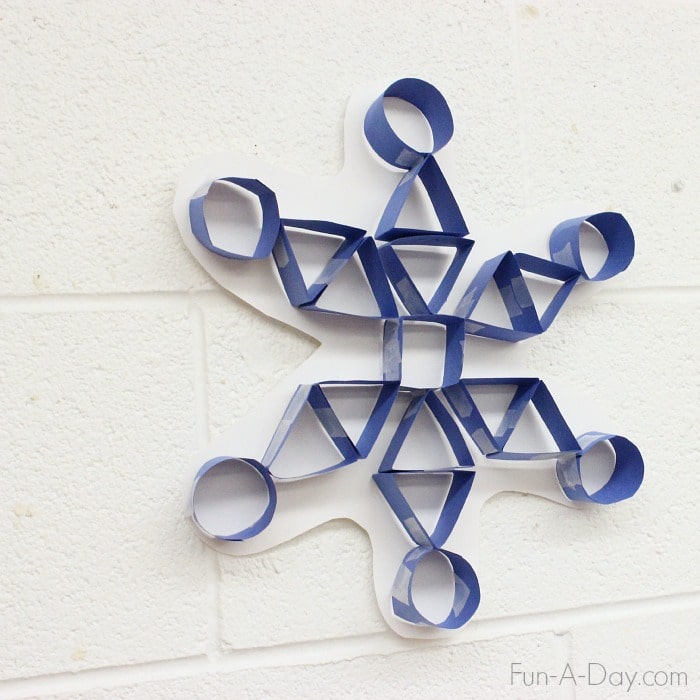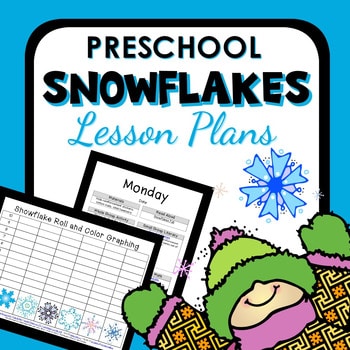This winter stem activity is the perfect addition to your winter activities for preschoolers. The snowflake engineering project is so much fun for the kids! And, not to mention, it’s full of tons of opportunities for learning and skill building.
Are you following Fun-A-Day’s Winter Pinterest board?
Snow seems to fascinate most children, and I must admit snowflakes themselves intrigue me. It hasn’t snowed here yet, but it surely will once winter is in full swing. In preparation for that, I have a winter stem activity to share that’s all about snowflakes! A simple, hands-on way to explore early science and math concepts.
winter stem activity that explores snowflakes
Learning goals What I’d like the kiddos to get out of this activity:
- An understanding of the structure of snowflakes
- An introduction and exploration of the concept of symmetry
- A chance to learn more about basic shapes
- The opportunity to plan and build their own “snowflake”
Materials
I may get commissions for purchases made through links in this post.
- Construction paper
- Tape, glue, and/or stapler
- Photos of real snowflakes
Directions Cut the construction paper into thin strips (ours were about an inch to an inch-and-a-half wide and about four to five inches long). Set about making some shapes with the paper strips:
- For the circle, simply loop the strip around and tape/staple/glue the ends together. We went with tape this time around.
- For the square, fold the strip in half and then half again. Then unfold and make into a square-shape. Attach the ends together.
- For the triangle, fold the strip into thirds, unfold, and attach the edges.
This is a great time to talk to the children about the qualities of different shapes. If they’re interested, let them help assemble the shapes. That’s an even more hands-on way to explore the shapes.
Once there are enough shapes constructed, bring out the photos of real snowflakes. The photos could be found together online, researched in a book, or even found in your own photos. Ask the children to tell you what they notice about the snowflakes – it’s always interesting to see what they notice first! Guide them to noticing there are three lines to each snowflake. Bring up the term symmetry and explain how, if the snowflakes were folded in half, both sides would match up.
Now move onto the planning and building portion of this stem activity! Draw three intersecting lines on a piece of paper. Work with the kids to map out their own snowflakes. Ask questions along the way to help guide them towards a symmetrical snowflake – “Why are you putting a circle there?” “What shape is next?” “I see a triangle on this side, so what shape should be here?” The kiddos can then tape, staple, or glue the shapes together into a snowflake. One of ours was taped together, while another needed to be placed onto another piece of paper.
Or just keep the individual shapes separate and let the kids build, and rebuild, snowflakes along the intersecting lines. Would your children like this winter stem activity?
Preschool Snow Lesson Plans
Save time and get right to the playful learning with our printable lesson plan sets. Each set includes over 30 learning activities related to the theme.
This set includes active hands-on learning ideas, book suggestions, and the following printables:
- Snowflake Roll and Color Graphing
- 2 Sets of Snowflake Number Cards for 0-35
- Snowflake Beginning Sounds Activity for Sounds /s/, /t/, and /m/
- Snowflake Upper- and Lowercase Letter Matching Puzzles
- Snowflake Patterning and Sorting Cards
- Count the Snowflakes Emergent Math Reader for Numbers 1 to 5
- Count the Snowflakes Emergent Math Reader for Numbers 1 to 10
Get your snowflake lesson plans at Preschool Teacher 101 or Teachers Pay Teachers


This is an awesome early math activity. Love it!
What a neat project for winter that gets kids talking about shapes.
This is such an awesome idea! A fantastic way to teach kids about shapes, symmetry and snowflakes!
I love this idea. Snowflakes intrigue many students andme too. I live in Alaska.
I bet snowflakes are intriguing up there in Alaska. Thanks, Leslie! 🙂